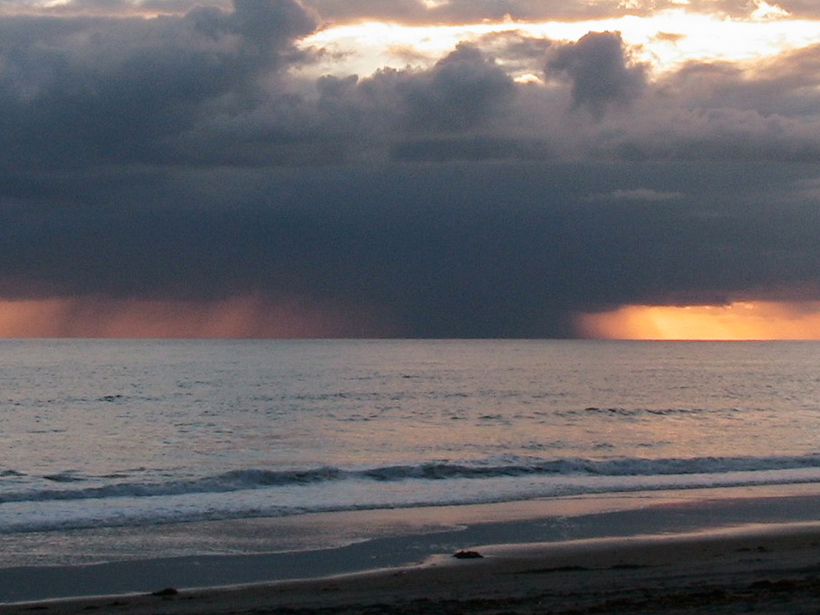Source: Geophysical Research Letters
The burst of cool air you feel on a hot summer day can be the final warning before a thunderstorm arrives with heavy rainfall. The air you feel is cooled by evaporating raindrops and descends in the interior of the storm before spreading outward.
These cool downdrafts form an integral part of the bigger thunderstorms known as mesoscale convective systems (MCSs), which produce a large proportion of tropical rainfall and play a crucial role in the global atmospheric circulation. Accordingly, it is important for scientists to understand the flow of air and energy through MCSs, and now, Kilpatrick and Xie report that satellites can be used to gather data about the storms’ inner workings.
Mesoscale convective systems contain two main patterns of airflow: warm, moist updrafts that “feed” the systems and cool, dry downdrafts that form the “exhaust.” The cool downdrafts can trigger new storms in neighboring regions, setting off a chain reaction. In this study, scientists detected the cool downdrafts over the ocean with the Advanced Scatterometer satellite, which calculates surface wind speed and direction by shooting microwaves at the ocean surface and measuring the reflected signal.
Using this technique, the team was able to identify over 1300 of the cool downdrafts from 2009 to 2014. The scientists confirmed that the wind signals are real by comparing them to data from ocean buoys. According to their analysis, the satellites are able to identify the mesoscale (50–300 km) downdrafts that make up the bulk of a storm, but the technique broke down near the storm’s narrower leading edge, where rainfall was the most intense.
Scientists have observed the airflow around ocean thunderstorms before, from ships and small airplanes. However, the satellite scatterometer allows a global view, offering an unprecedented opportunity to study how these storms interact with their environment. (Geophysical Research Letters, doi:10.1002/2015GL063025, 2015)
—David Shultz, Freelance Writer
Citation: Shultz, D. (2015), Cool downdrafts in large thunderstorms captured by satellite, Eos, 96, doi:10.1029/2015EO035095. Published on 4 September 2015.
Text © 2015. The authors. CC BY-NC 3.0
Except where otherwise noted, images are subject to copyright. Any reuse without express permission from the copyright owner is prohibited.

